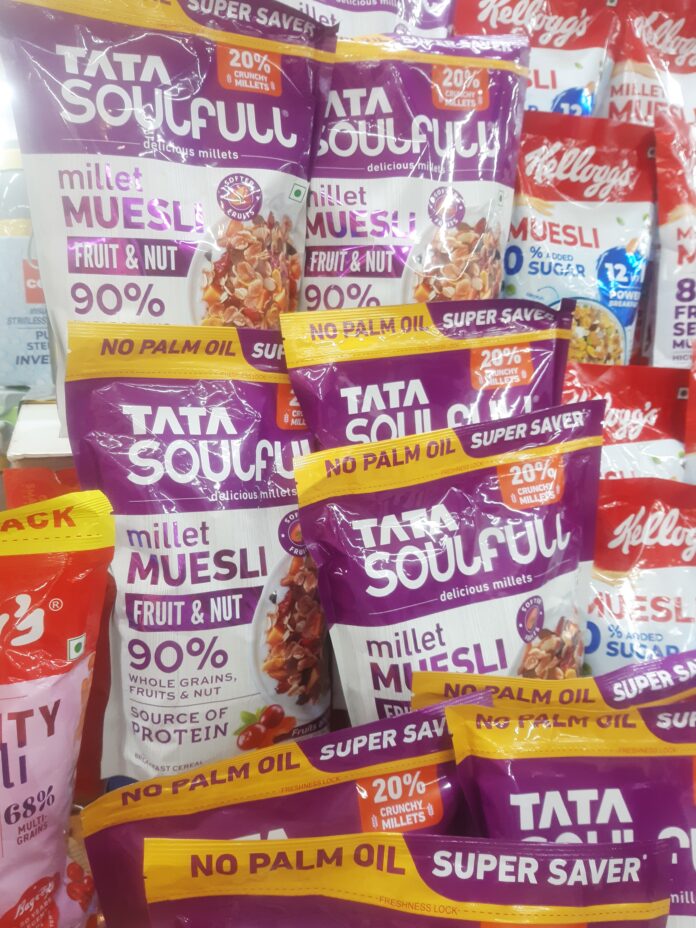
From products for mass consumption to premium offerings – popular fast-moving consumer goods (FMCG) brands are reshaping the marketing landscape across multiple sectors to target the new, evolving customer who aspires for a small slice of the elite pie.
Giants such as Nestle India, ITC, Tata Consumer Products, Parle Products, the Gujarat Cooperative Milk Marketing Federation (Amul), Britannia or Parag Milk Foods are now focusing on high-end products to align with the evolving preferences and aspirations of consumers.
If one company is using AI and ML to understand consumer trends, the others are micro-segmenting consumers and reinventing their sales, distribution, and marketing to sell premium products.
Nestle India recently unveiled plans to hire tasters and connoisseurs for its super-premium Nespresso coffee boutiques, apart from launching its portfolio of high-end cereals, flavored yoghurts, cat food, and pricey coffees.
Its rival, Tata Consumer Products, is offering a diverse array of premium products, including Himalayan Saffron, high-quality dry fruits, and ready-to-cook meals under the Tata Sampann brand, and direct-to-consumer brands such as Tata Tea 1868, Tata Coffee Sonnets, and Tata Coffee Gold Cold Brew.
In 2024, Hindustan Unilever Ltd (HUL) pointed to a marked shift in consumer preferences to premium. Categories such as premium face care, premium hair care, body wash, home care liquids, condiments and mini meals, and well-being, it said, are “long-term bets.”
Nestle India chairman Suresh Narayanan recently said in an investor meeting that the company sees a ₹7,500-crore (approximately $900 million) premiumization opportunity. Since 2015, Nestle’s premium product segment reported a 16% compound annual growth rate (CAGR), which points to a growing demand for higher-quality products.
A NielsenIQ report says premiumisation drives 42% of FMCG value growth in India as consumer tastes shift. The report sheds light on the resilience and rapid growth of premium and luxury products, expanding at a significant rate despite the sector’s challenges. Key drivers include higher income levels, urbanization, the rise of smartphone usage, and a consumer base that values premium quality.
A host of companies are going premium, different reports and studies suggest. Nearly 15-18% of Parle’s existing portfolio is now premium, which it qualifies as products priced at Rs 200-250 per kg and above.
For mass marketer GCMMF, known for selling Amul ice-cream for as low as Rs 20 in pushcarts, kirana shops and eCommerce, the focus now is on upscale parlors and Amul Ice Lounge stores for high-end ice-cream variants. The trend is visible across categories, including consumer staples. Parag Milk Foods, meanwhile, is pushing its premium Pride of Cows milk and dairy products.
According to the NielsenIQ report, the premiumization trend helped HUL achieve 30% growth. Colgate Palmolive noted faster growth in its premium segment compared to its mass products, while United Breweries saw its premium volumes rise by 27% against an overall volume growth of 5%.
Other companies joining the premium bandwagon are ITC, which reported steady traction in premium products in its beauty and personal care products segment. A report by Mitsui & Co. Global Strategic Studies Institute reported premium products contributed to 26% of ITC’s total sales in 2021, which rose to 37% in 2023, particularly for brands such as Dermafique.
ITC’s food product lineup has also expanded, with a focus on processed dairy goods such as the ‘Select’ series of cottage cheese and flour brands.
Britannia is diversifying its product range with croissants, cakes, and healthier cookies. In 2022, the company entered a joint venture with Bel SA – a French cheese manufacturing company – for high-value dairy products.
Dabur India promotes high-quality, health-conscious products while launching an online-only brand aimed at younger consumers.
Marico had earlier strengthened its health food offerings with products such as Saffola Aura, an olive oil rich in omega-3. (Saffola Aura has been discontinued since.) Marico also has heathy offerings such as Saffola Masala Oats, Saffola Cuppa Oats, and Saffola Muesli. It acquired brands such such as Beardo and Just Herbs as part of the premiumization drive – aiming for the premium segment to account for 20-25% of total sales by FY2027.
L’Oréal India is fortifying its dermatology brands such as CeraVe and La Roche-Posay, alongside premium hair care brands such as Redken and Kérastase. Procter & Gamble emphasizes its premium hair care brand Pantene’s nourishing aspects and OLAY’s anti-aging benefits.
Mondelez India is promoting the premium aspects of its chocolate products, focusing on smoother textures and richer flavors, while planning substantial investments to bolster manufacturing capacity.
PepsiCo India is working on higher-end products, including energy drinks and premium Lay’s Gourmet potato chips, with investments to enhance its production capabilities in both beverage and food sectors.
The rising demand for quality and premium products has also given rise to a host of new companies in the segment.
Names such as Honasa Consumer (Mamaearth), Innovist (Onesto Labs), MyGlamm and Kapiva in the personal care category, and Wingreens Farms, Wellbeing Nutrition, and Sproutlife Foods in the food space are also carving a name for themselves in the premium market. These are just a few of the numerous new brands competing with the leading brands that are eyeing the new, premium, quality-conscious customer.
(This story was amended on 23.7.2023 to edit the part on Marico. The company’s Saffola Aura brand mentioned in the story is no longer part of its product portfolio)
IndiFoodBev — authentic, impactful and influential
An English-language food and beverage processing and packaging industry B2B platform in print and web, IndiFoodBev is in its third year of publication. It is said that the Indian food and beverage industries represent approximately US$ 900 billion in revenues which implies more than 20% of the country’s GDP. Eliminating the wastage on the farmside can help to deliver more protein to a higher number of the population apart from generating sizable exports. The savings in soil, seeds, water, fertilizer, energy and ultimately food and nutrition could be the most immense contribution that country is poised to make to the moderation of climate change.
To improve your marketing and grow sales to the food and beverage processing and packaging industry, talk to us. Our research and consulting company IppStar [www.ippstar.org] can assess your potential and addressable markets in light of the competition. We can discuss marketing, communication, and sales strategies for market entry and growth.
Suppliers and service providers with a strategy and budget for targeted marketing can discuss using our hybrid print, web, video, and social media channels to create brand recognition linked to market relevance. Our technical writers are ready to meet you and your customers for content.
The second largest producer of fruit and vegetables in the world is continuously expanding processing capacities and delivery systems with appropriate innovative technologies. We cover product and consumer trends, nutrition, processing, research, equipment and packaging from farm to thali. Get our 2025 media kit and recalibrate your role in this dynamic market. Enhance your visibility and relevance to existing markets and turn potential customers into conversations. Ask for a sample copy of our bi-monthly in print or our weekly IndiFoodBev eZine each Wednesday.
For editorial info@ippgroup.in — for advertisement ads1@ippgroup.in and for subscriptions subscription@ippgroup.in
Naresh Khanna – 10 February 2025
Subscribe Now










